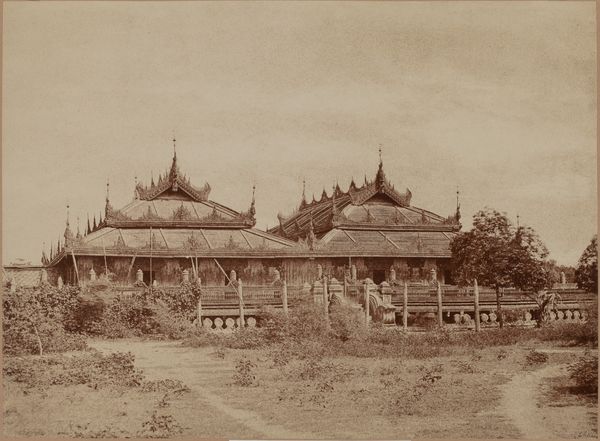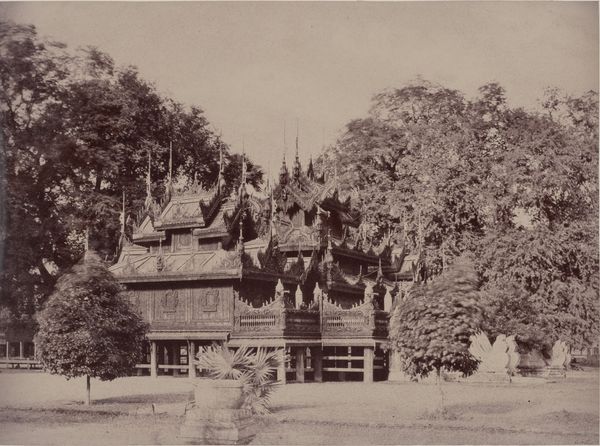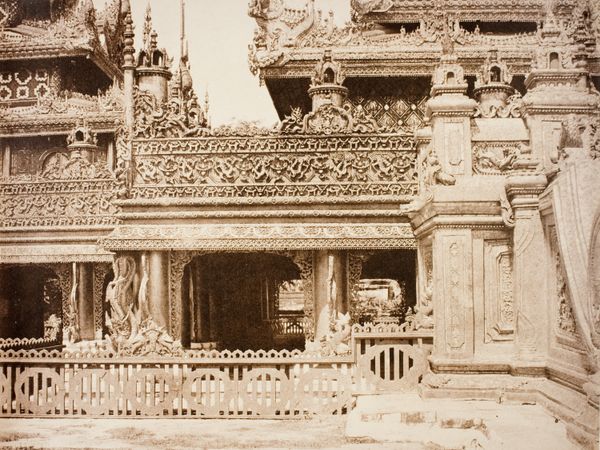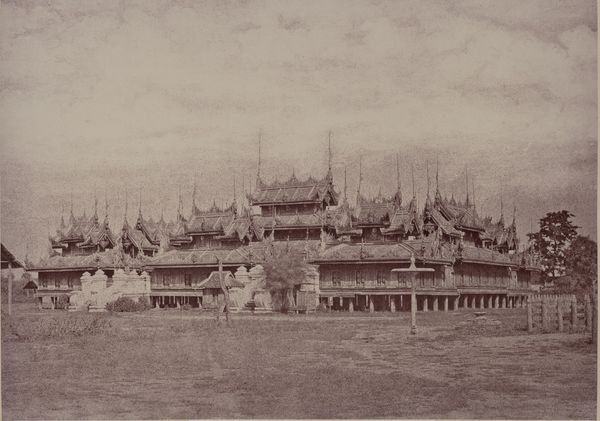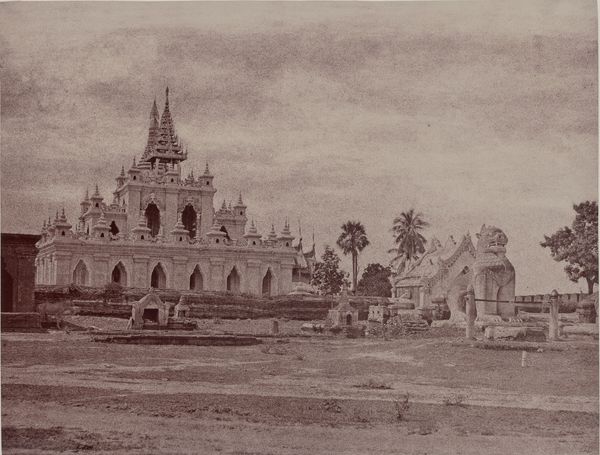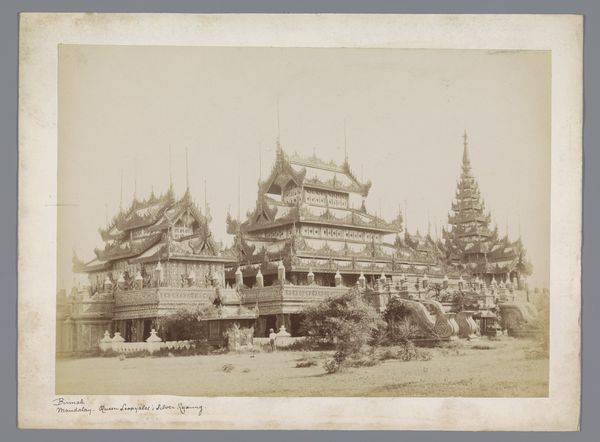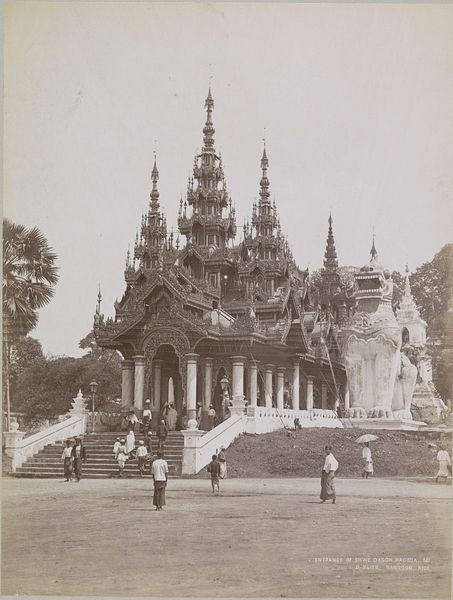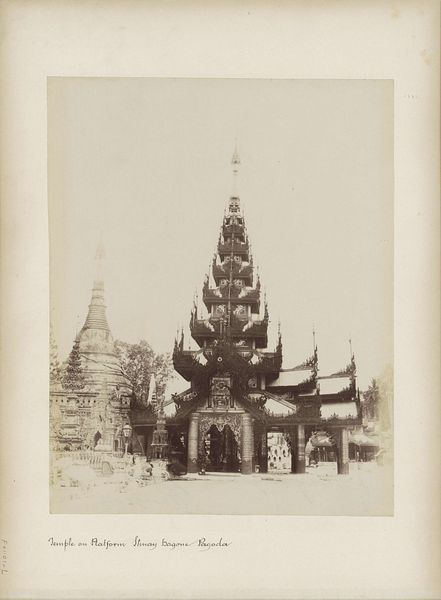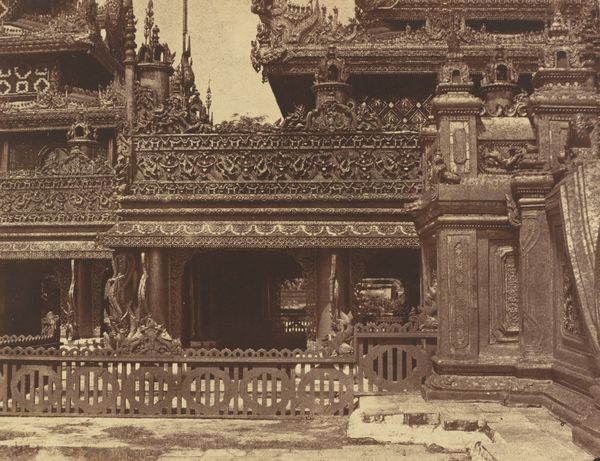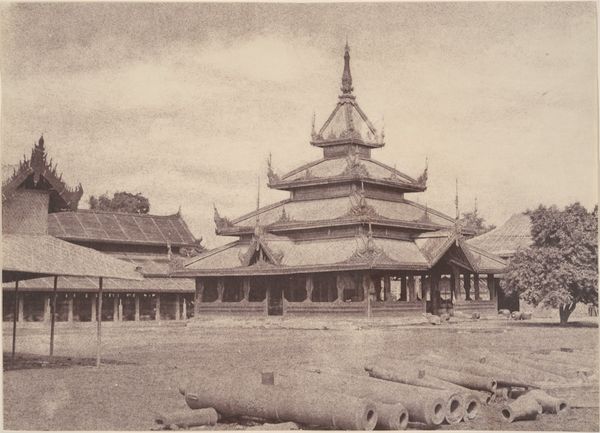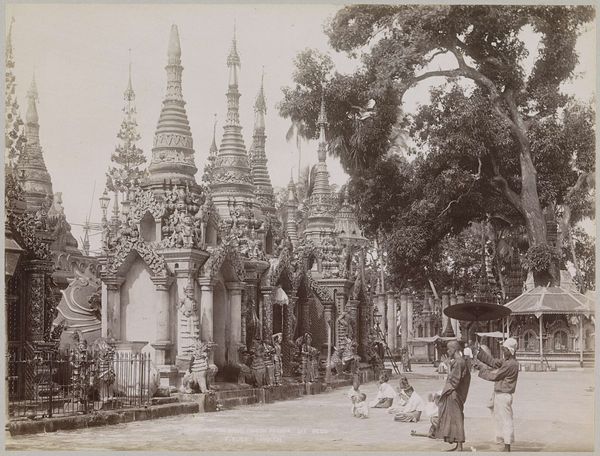
photography
#
asian-art
#
photography
#
19th century
Dimensions: image: 26.1 × 34 cm (10 1/4 × 13 3/8 in.) mount: 45.6 × 58.1 cm (17 15/16 × 22 7/8 in.)
Copyright: National Gallery of Art: CC0 1.0
Curator: Welcome. We’re looking at a photograph by Linnaeus Tripe, titled "Amerapoora: Maha-oung-meeay-liy-mhan Kyoung," created around 1855. Editor: This image immediately strikes me as a quiet record of intricate artistry. There’s a tangible solemnity in the architecture and in Tripe’s rendering of it. Curator: Indeed. Let’s examine the interplay of light and shadow here. Tripe uses it masterfully to articulate the temple’s multi-tiered structure. Notice how the subtle variations emphasize the elaborate carvings. The tonal range enhances the perception of depth and mass, doesn't it? Editor: It does, but I can’t ignore the colonial gaze here. Tripe, a British officer, photographs this Buddhist monastery, likely for documentation purposes in a time of increasing British influence in Burma. The aesthetic beauty cannot erase this complicated history. Who did this artwork serve? What assumptions and politics underlie it? Curator: I agree that the historical context is crucial. But also consider the formal qualities. The architectural complexity— the repeated spires, layered roofs— it’s almost overwhelming. Each horizontal plane is richly ornamented. Tripe frames all this with foliage to create pictorial depth. Editor: That foliage is vital. It serves as a visual reminder that nature endures beyond ideological constraints. Looking through a contemporary lens, the photograph also preserves an endangered culture amidst colonialism, inviting conversations about preserving historical sites in a modern context. Curator: Precisely. By applying these theories, we can grasp the artist’s arrangement and intention within cultural representation through structural composition and the image’s thematic elements. Editor: Ultimately, a close viewing encourages reflection on power, preservation, and perspective. We consider visual language and ideological frameworks and gain something meaningful about this artwork and ourselves. Curator: This layered method of critical thinking unlocks possibilities to decode Tripe’s vision. I concur with you entirely.
Comments
No comments
Be the first to comment and join the conversation on the ultimate creative platform.
